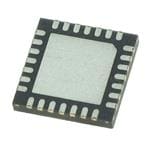Power Line Communication (PLC) allows one to transmit and receive data by floating a modulated carrier signal over existing power lines. The primary benefit of PLC is the ability to use existing infrastructure rather than install new wiring, thus saving space, weight, time and cost as well as providing flexibility in solving problems.
PLC is especially useful for the monitoring or control of distributed and remote devices such as smart meters, street lights, and for home and automotive networks; however, distance travelled and signal transmission rates vary greatly by application. Each type of power system will have specific issues to be resolved in order to communicate successfully. Therefore, PLC is not a one-size-fits-all technology, but an application that must be tweaked to fit the chosen environment based on resident frequencies, inherent noise, electromagnetic compatibility, the resident power source, and so forth.





